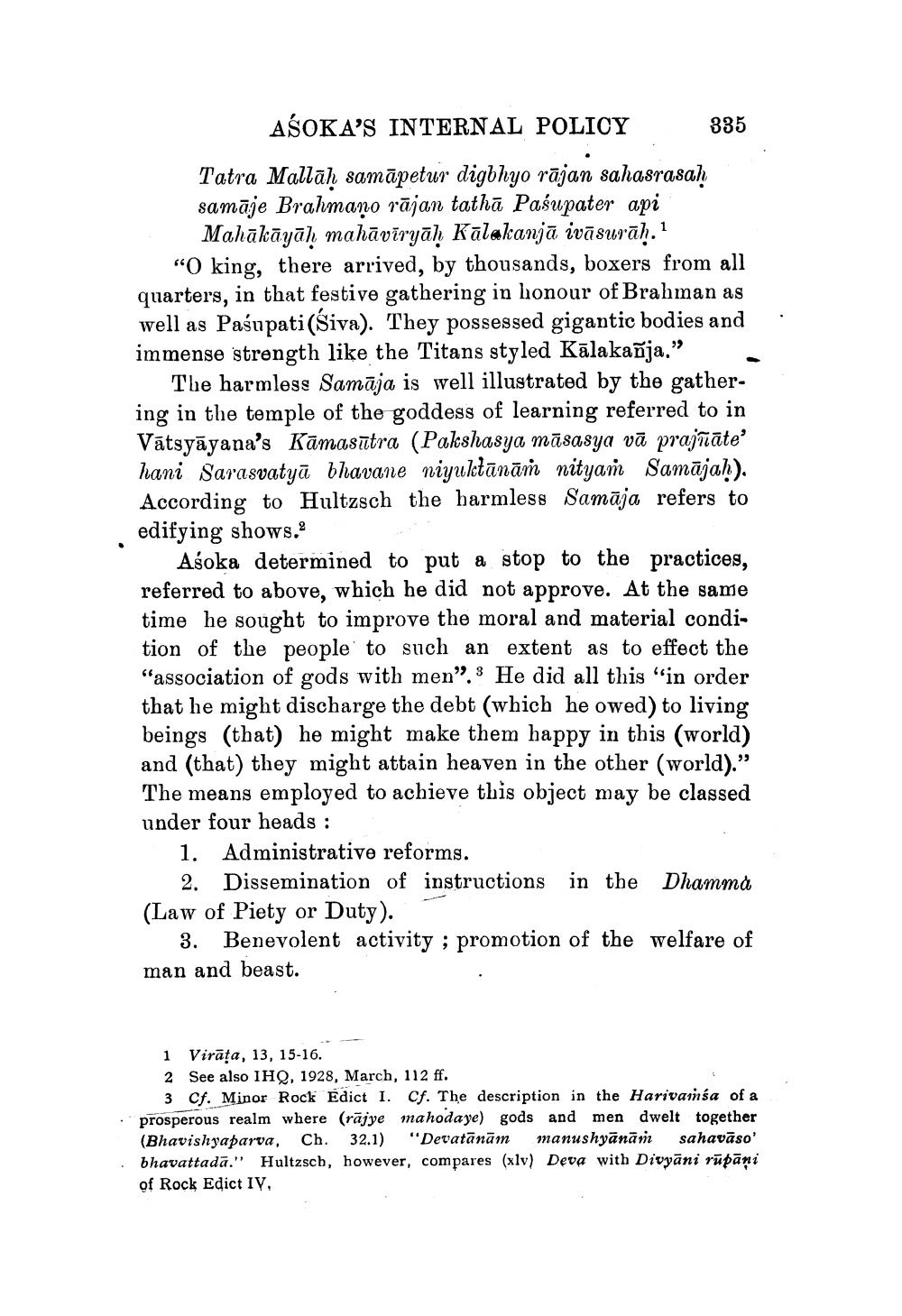________________
AŚOKA'S INTERNAL POLICY
335
Tatra Mallāh samāpetur digbhyo rājan sahasrasah samāje Brahmano rājan tathā Pasupater api
Mahākāyāh mahāvīryāḥ Kāløkanjā ivāsurāh.? “O king, there arrived, by thousands, boxers from all quarters, in that festive gathering in honour of Brahman as well as Pasupati (Śiva). They possessed gigantic bodies and immense strength like the Titans styled Kālakanja."
The harmless Samāja is well illustrated by the gathering in the temple of the goddess of learning referred to in Vātsyāyana's Kāmasītra (Pakshasya māsasya vā prajñāte' hani Sarasvatyā bhavane niyuktānāṁ nityam Samājah). According to Hultzsch the harmless Samāja refers to edifying shows.
Asoka determined to put a stop to the practices, referred to above, which he did not approve. At the same time he sought to improve the moral and material condition of the people to such an extent as to effect the "association of gods with men”.9 He did all this "in order that he might discharge the debt (which he owed) to living beings (that) he might make them happy in this (world) and (that) they might attain heaven in the other (world).” The means employed to achieve this object may be classed under four heads :
1. Administrative reforms.
2. Dissemination of instructions in the Dhamma (Law of Piety or Duty).
3. Benevolent activity ; promotion of the welfare of man and beast.
1 Virāța, 13, 15-16. 2 See also IHQ, 1928, March, 112 ff.
3 Cf. Minor Rock Edict 1. Cf. The description in the Harivaisa of a prosperous realm where (rājye mahodaye) gods and men dwelt together (Bhavishyaparva, Ch. 32.1) "Devatānām manushyānām sahavāso' bhavattada." Hultzsch, however, compares (xlv) Deva with Divyāni rūpāni of Rock Edict IV.




